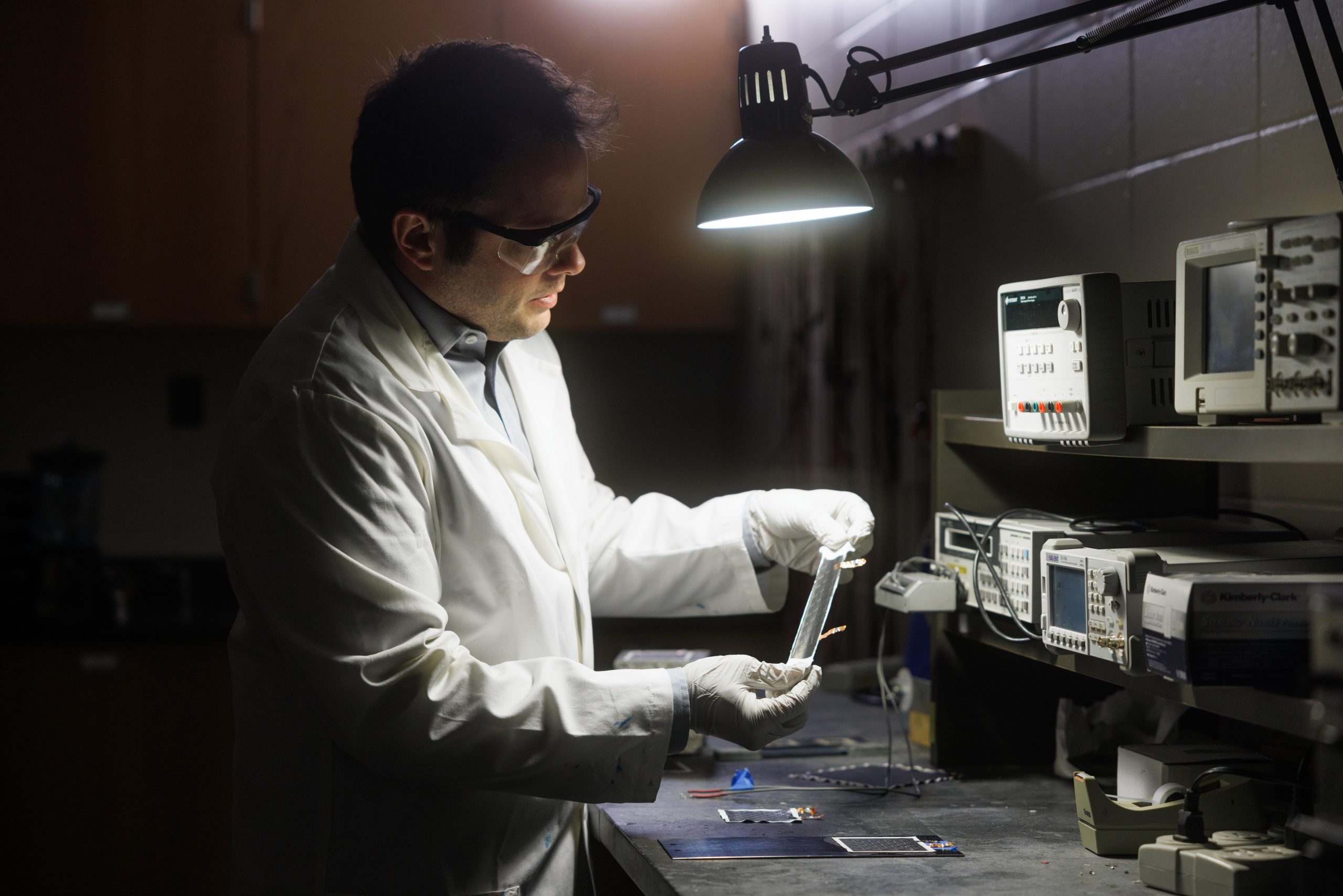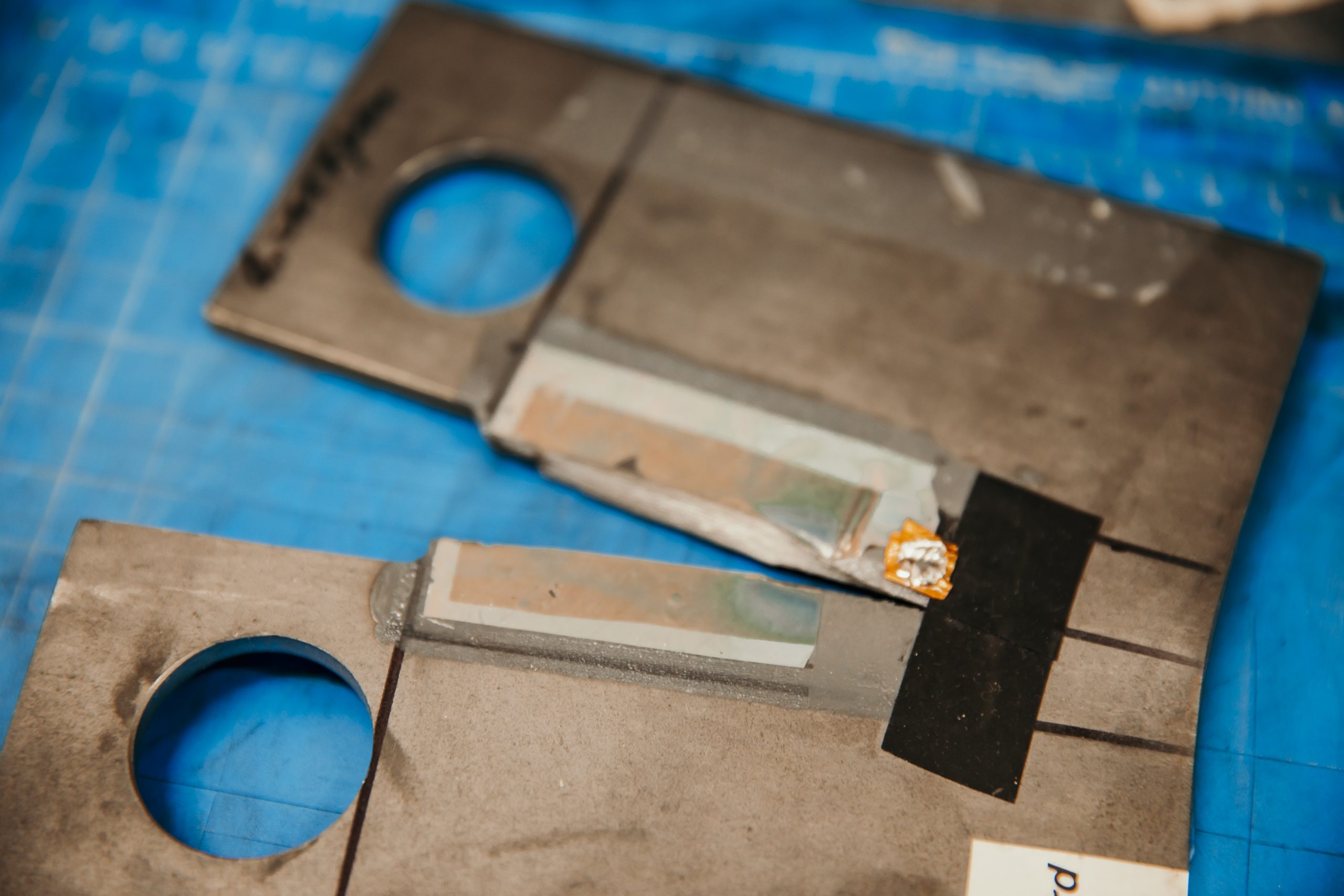Simon Laflamme co-develops a revolutionary sensor for bridges that changes color when fatigue cracks form
Author: Jens Jorgensen
Author: Jens Jorgensen

Simon Laflamme has been at Iowa State University for over a decade and has contributed with different research projects through the years.
Most recently, Laflamme has worked closely with Harvard University to create a multifunctional stretchable strain sensor that changes colors when covering a crack in a steel component. They came up with a stretchable polymer that changes color from white to blue when a crack in a structure is identified. The polymer was also modified into a piece of flexible electronics that changes electrical properties upon a change in geometry, therefore augmenting the optical color feedback with an electrical feedback.
“Most of the research I’ve done on sensors was trying to create some sort of biological inspired skin. So like humans, if you hurt yourself, you know where the pain is and know how much you feel it,” said Laflamme. “The sensors will be able to get better information, and therefore help us to conduct real time condition assessment to know what’s wrong, how wrong it is, and how to fix it.”
During development, Laflamme’s goal was to create a sensor that was revolutionary and had never been seen before. Luckily, he didn’t run into too many challenges during development. But one hurdle that had to be cleared was working with Harvard to create a mixture that was stable under normal environmental conditions.
“It took some time to create a stable mix of something that would not decay when exposed to the environment,” said Laflamme. “A colleague from Harvard came here for a summer and we ended up refining the sensor and characterize it. We tried to see how well it could detect a fatigue crack, what kind of colors we have for the resolution and compare against the state of the art.”

Aside from his research studies, Dr. Laflamme has been a professor in the Department of Civil, Construction, and Environmental Engineering since 2011. Settling in Ames wasn’t always on his radar, but one aspect about Iowa State University stood out to him more than anything.